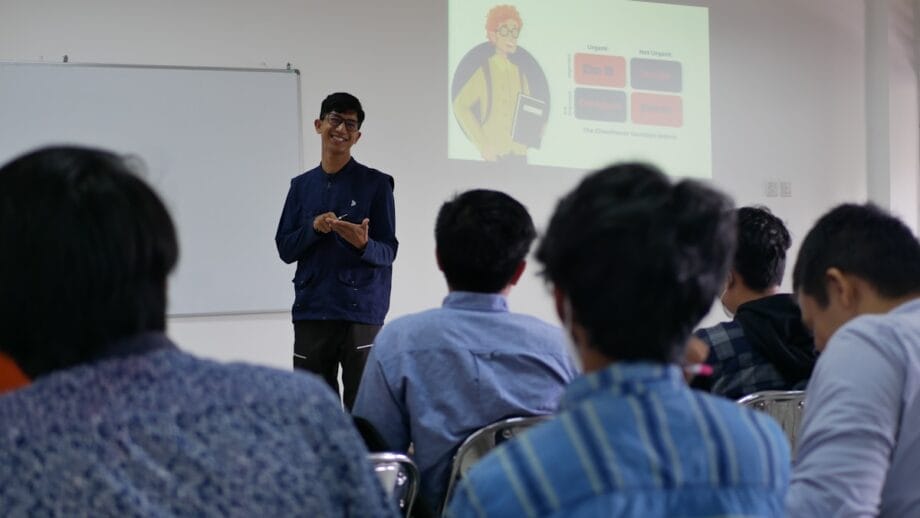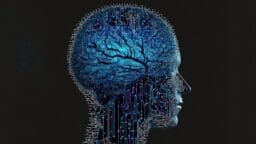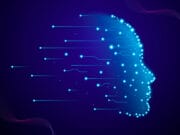In an era where artificial intelligence (AI) and machine learning (ML) are reshaping every corner of our lives, education stands on the brink of a profound transformation. Imagine a world where tests adapt in real-time to a student’s strengths and weaknesses, where grading happens instantaneously with personalized feedback, and where assessments measure not just rote knowledge but creative problem-solving. This isn’t science fiction – it’s the emerging reality of AI-driven education.
As tools like generative AI and adaptive algorithms infiltrate classrooms, they’re poised to revolutionize how tests are designed, administered, and scored. But with great innovation comes great responsibility: ethical dilemmas loom large, demanding careful navigation to ensure fairness and equity.
We asked the experts to tell us about this test design and scoring shifts, highlighting the opportunities and challenges ahead.
Revolutionizing Test Design: From Static to Adaptive Mastery

Traditional test design has long been a one-size-fits-all affair – static questions crafted by human experts, often limited by time and resources. AI and ML are flipping this script, enabling dynamic, personalized assessments that evolve with the learner.
At the heart of this change is adaptive testing, where AI algorithms adjust question difficulty based on a student’s responses, ensuring a more precise measure of ability. For instance, machine learning can generate tailored test items on the fly, incorporating a student’s interests – like using sports analogies for math problems – to boost engagement and relevance.
This personalization not only caters to diverse learning styles but also reduces the burden on educators, who can leverage AI to create “similar but not the same” questions that probe deeper understanding without risking memorization cheats.
“With AI at the helm, tests become more than just hurdles – they transform into guides, offering challenges that match your skills and spark your curiosity. The result is a fairer, more engaging way to measure what you truly know.”EY
Looking ahead, AI will empower the creation of richer, scenario-based tasks. Picture simulations where students curate virtual museum exhibits or solve real-world dilemmas, assessing skills like critical thinking and collaboration.
As natural language processing advances, tests could incorporate open-ended elements, such as AI-powered chatbots that evaluate reasoning in real-time, moving beyond multiple-choice formats to mirror postsecondary and workplace demands. The result? Tests that feel less like hurdles and more like stepping stones to mastery.
Transforming Test Administration: Seamless and Invisible Integration
Gone are the days of rigid, high-stakes exam days. AI is ushering in an age of seamless administration, where assessments blend invisibly into the learning process.
Stealth assessments, embedded within educational games or activities, allow AI to gather data without the stress of traditional testing. Intelligent tutoring systems (ITS) provide one-on-one guidance, administering micro-assessments in real-time and offering granular feedback to keep students on track.
Voice-based AI could diagnose reading challenges during aloud sessions, while recommender systems predict at-risk students and suggest interventions, making administration proactive rather than reactive.
In the future, administration will become even more ubiquitous and efficient. With AI handling logistics like pacing and accessibility – adapting for neurodiverse learners or English language students – educators can focus on human elements like motivation.
Integration with virtual reality could simulate immersive environments for hands-on assessments, such as lab experiments, administered globally without physical constraints. This shift promises to democratize education, but only if infrastructure gaps are bridged to avoid widening divides.
Advancing Scoring and Evaluation: Speed, Precision, and Insight
“The future of evaluation is not just about right or wrong. With machine learning, even small steps toward a solution are recognized, making every effort count on the road to understanding.”TESTIZER
Scoring has historically been labor-intensive and subjective, prone to human error. AI and ML are accelerating this process, delivering precise, data-driven evaluations at scale.
Automated essay scoring (AES) exemplifies this, where natural language processing analyzes writing for structure, content, and style, providing instant feedback on aspects like topic sentences or conclusions.
Machine learning can even score open-response items, detecting patterns in scientific models or qualitative physics problems, reducing teacher workload while offering constructive criticism. Vision-based AI, using cameras to grade handwritten work, adds another layer of efficiency.
Forward-thinking applications include process-oriented evaluation, where AI credits partial steps in problem-solving, fostering growth mindsets. As algorithms improve, scoring could incorporate socio-emotional factors, like collaboration in group tasks, leading to holistic reports that guide personalized learning paths.
However, early experiments show mixed results – AI-scored assessments sometimes favor basic writing or overlook nuances, underscoring the need for human oversight.

Future Prospects: A New Era of Deeper, Equitable Assessments
The horizon for AI in testing is bright, with potential to create deeper, more equitable evaluations. Standardized tests could evolve into AI-driven performance assessments, emphasizing skills over knowledge regurgitation. Imagine AI generating project-based exams resistant to cheating, measuring real thinking through portfolios or simulations.
Yet, adoption will be gradual, starting in classrooms before scaling to high-stakes scenarios. Investments in research, like federal grants for AI tools, will fuel innovations such as AI tutors that enhance learning without becoming crutches. The key? Designing AI to build fundamentals, not outsource them, ensuring students thrive in an AI-augmented world.
Ethical Considerations: Balancing Innovation with Integrity
“In pursuing innovation, we must uphold integrity. True progress with AI lies not only in efficiency but in fairness, transparency, and protecting all individuals – building technologies that uplift and value every voice.”ResearchGate
While AI promises efficiency, ethical pitfalls abound, demanding vigilant safeguards.
Bias in algorithms tops the list: Training data reflecting societal prejudices can lead to discriminatory scoring, disadvantaging marginalized groups. For example, essays referencing rap music might score lower than those citing classical, amplifying inequities. Privacy concerns arise from extensive data collection, risking breaches and surveillance that erode trust.
Transparency and accountability are crucial – AI’s “black box” decisions must be explainable, with human oversight to override errors. Equity of access ensures AI doesn’t exacerbate divides, requiring inclusive designs for diverse learners. Academic integrity faces threats too, as AI-generated answers challenge traditional homework, pushing toward in-class evaluations.
Addressing these requires frameworks like the AI Bill of Rights, emphasizing fairness, data stewardship, and inclusivity. By prioritizing ethical guidelines, we can harness AI’s power without compromising educational values.
FAQs

1. What recent advancements in AI tools are enhancing automated grading for educational assessments in 2025?
In 2025, AI-powered automated grading systems will have evolved to incorporate multimodal analysis, evaluating not just text but also images, videos, and code submissions in real-time.
For instance, tools like those detailed in the AI-Powered Automated Grading Guide emphasize boosting speed and fairness by using natural language processing combined with computer vision to assess complex assignments, such as lab reports with diagrams, reducing grading time by up to 80% while providing detailed analytics on student misconceptions.
This builds on traditional automated essay scoring by integrating predictive defect analysis to flag potential errors before final submission, making evaluations more proactive.
2. How is AI addressing academic integrity challenges in test administration and scoring?
AI is increasingly deployed to detect and prevent cheating through advanced proctoring and content analysis. A 2025 study on ensuring academic integrity in the age of ChatGPT highlights shifts toward project-based evaluations at institutions like Stanford University, where AI tools analyze student work for originality by comparing it against generative patterns, while also redesigning exams to emphasize real-world applications that AI struggles to replicate.
Additionally, AI detection software now incorporates behavioral tracking, such as monitoring typing patterns and response times, to identify anomalies without invasive surveillance, promoting ethical use through institutional policies like Duke University’s AI Ethics Committee.
3. What new ethical frameworks have emerged for AI in educational assessments by 2025?
By 2025, frameworks like the European Commission’s Ethical Guidelines on AI in Teaching and Learning have gained prominence, focusing on multi-stakeholder governance to mitigate risks such as algorithmic opacity and data misuse.
A qualitative study from that year outlines three levels of ethical considerations: societal impacts (e.g., reducing educational inequality), institutional responsibilities (e.g., transparent AI decision-making), and individual learner protections (e.g., informed consent for data use in assessments).
These build on the earlier AI Bill of Rights by emphasizing proportionality, safety, and non-discrimination, with calls for regular audits to ensure AI tools do not perpetuate biases in scoring diverse student populations.
4. How is AI transforming assessments in K-12 education, and what ethical issues arise?
In K-12 settings, AI is enabling predictive analytics tools that forecast student performance and suggest interventions, such as chatbots for formative assessments in subjects like reading and math.
Ethical challenges include surveillance risks from facial recognition in proctoring, which could lead to privacy invasions and anxiety among young learners, as noted in 2025 discussions on non-discrimination and data protection.
Resources like MIT’s “AI and Ethics” curriculum are being adopted to teach students about these issues, fostering critical thinking on AI’s role while ensuring tools model social and emotional states for holistic evaluations.
5. What future trends in AI-driven exam evaluation emphasize holistic and equitable approaches?
Looking ahead, AI trends point toward holistic assessments that integrate socio-emotional metrics, such as collaboration and creativity, using machine learning to evaluate group projects via real-time interaction analysis.
A 2025 review on the evolution of educational assessment predicts scalable AI systems that adapt to diverse learner needs, addressing biases through enhanced data regulations, but warns of the need for human-centered design to avoid over-reliance on opaque algorithms. This shift aims for greater equity by personalizing feedback for underrepresented groups, with ongoing research focusing on the environmental impacts of AI infrastructure in education.
Conclusion: Embracing the AI-Driven Future with Caution

AI and machine learning are set to redefine test design, administration, and scoring, making education more adaptive, efficient, and insightful. From personalized designs to instantaneous evaluations, the benefits could unlock unprecedented learning potential.
Yet, as we forge ahead, ethical vigilance is non-negotiable – mitigating biases, protecting privacy, and ensuring equity will determine whether this revolution empowers all learners or entrenches divides.
The future of testing isn’t just about smarter machines; it’s about wiser humans guiding their use. By striking this balance, we can create an educational landscape where every student thrives.






